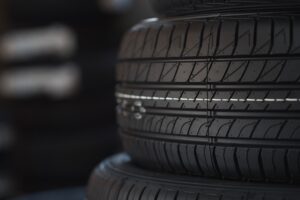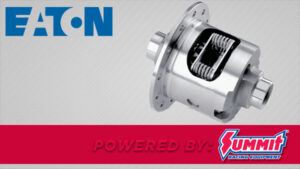How Do A/C Compressors Work?
By Marc Christ
In 1940, Packard put an air conditioning (A/C) system on one of their cars. Since then, A/C has become a lot more popular, and in the last 20 years in the United States, almost all the cars that have been manufactured have been equipped with A/C from the factory. Today we’re going to go over some of the different types of A/C compressors, and what they do.
The compressor is what pumps the refrigerant through the system. It takes a low-pressure gas, and it turns it into a high-pressure hot gas, and sends it to the condenser.
The RV2 compressor is found on Chrysler vehicles starting in 1961. It’s super heavy and made of cast iron, and has a V2 design, and it looks a little bit like a Harley engine. One of these will rob between 10-15 horsepower, so they’re not really good for high-performance applications. The next style is the York and Tecumseh style compressor. The York has an aluminum case, while the Tecumseh has a cast iron case. That’s the only difference, and other than that, the designs are very similar. Both are a two-piston inline cylinder design. Both types were used from about 1958 until the 1980’s. They were used on many domestic and foreign manufactured vehicles, but mostly on the domestic Ford Motor Company and AMC vehicles. These are very easy to convert to an air compressor, so these are particularly popular with the off-road crowd. Another popular air conditioning compressor is the Frigidaire A6. Millions of these compressors were manufactured and installed on GM vehicles over the course of about 25 years. Because of its axial design with a swashplate, you can reverse the rotation, and it will pump in reverse without a problem. These can also be converted to air compressors, but the problem is that they are very large and heavy. And once they wear out, they’re kind of a pain to rebuild.
GM replaced that old, heavy A6 with the R4. The R4 is normally referred to as a pancake compressor because of its shallow, compact design. It’s a radial piston pump, so the pistons are along the perimeter of the case in a radial layout, much like an old radial airplane engine. As they age, the R4 compressors tend to leak around the outside on the front and back sides, where an O-ring seals the case to the internals. GM used these pancake-style compressors from the mid-‘70s until they were replaced with a newer, modern compressor in the mid-‘90s. Many new OEM and aftermarket manufacturers have gone with a more modern Sanden compressor. It has an axial design with a wobble plate, which ensures a long service life. These are very common for swaps because of the universal mounting tabs, compact design, and V-belt / serpentine belt options. They are also popular for high-performance applications because they only rob about 3-5 horsepower.
Air conditioning systems tend to be avoided by many do-it-yourselfers, but the systems are quite simple, typically. The same goes for many of the components, including the compressor itself.









